Simultaneous expression of cocaine-induced behavioral sensitization and conditioned place preference in individual rats
- PMID: 18455710
- PMCID: PMC2486360
- DOI: 10.1016/j.brainres.2008.03.054
Simultaneous expression of cocaine-induced behavioral sensitization and conditioned place preference in individual rats
Abstract
Conditioned place preference and locomotor sensitization are rodent behavioral models commonly used to investigate the actions of drugs of abuse. However, few studies have examined both paradigms in the same group of animals. We were interested in developing a combined protocol which successfully induced both conditioned place preference and sensitization simultaneously in cocaine-treated Sprague-Dawley rats in order to test the hypothesis that the magnitude of these two phenomena would be positively correlated. We used an open-field with a removable place preference insert to assess these measures independently. Cocaine-conditioned animals demonstrated a significant shift in preference for the drug-paired compartment and a sensitized locomotor response which was not observed in saline-conditioned animals challenged with cocaine. There was no significant relationship between locomotor sensitization and conditioned place preference in individual animals. We further examined these results with respect to each rat's initial response to cocaine, response to a novel environment and central zone entries in an open-field. Locomotor sensitization demonstrated an inverse correlation with the initial cocaine response. In contrast, conditioned place preference demonstrated an inverse correlation with the centre response. These results demonstrate that the combination of the acute cocaine response and the centre response in a novel open-field environment can be used to indicate the propensity of a given rat to exhibit either behavioral sensitization or conditioned place preference; however, it seems that sensitization and place preference are not necessarily co-expressed to a similar extent in the same individual animal.
Figures
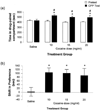
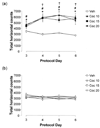
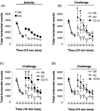
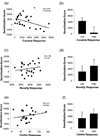
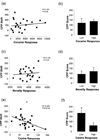
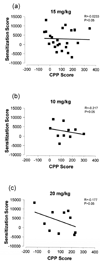
References
-
- Antelman SM. Time-dependent sensitization as the cornerstone for a new approach to pharmacotherapy: drugs as foreign/stressful stimuli. Drug Development Research. 1988;14:1–30.
-
- Bardo MT, Rowlett JK, Harris MJ. Conditioned place preference using opiate and stimulant drugs: A meta-analysis. Neurosci Biobehav Rev. 1995;19:39–51. - PubMed
-
- Bardo MT, Bevins RA. Conditioned place preference: what does it add to our preclinical understanding of drug reward? Psychopharmacology. 2000;153:31–43. - PubMed
-
- Brabant C, Quertemont E, Tirelli E. Evidence that the relations between novelty-induced activity, locomotor stimulation and place preference induced by cocaine qualitatively depend upon the dose: a multiple regression analysis in inbred C57BL/6J mice. Behav Brain. Res. 2005;158:201–210. - PubMed
Publication types
MeSH terms
Substances
Grants and funding
LinkOut - more resources
Full Text Sources
Medical

